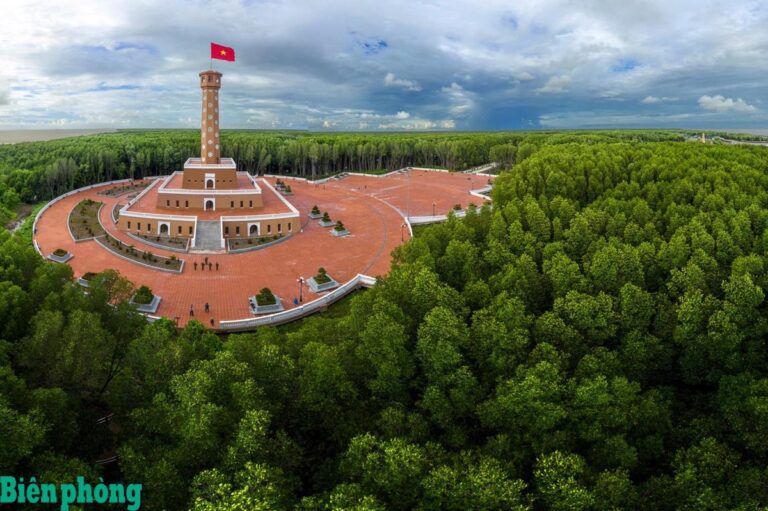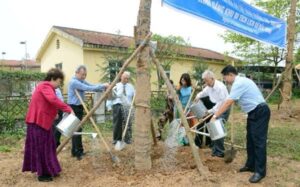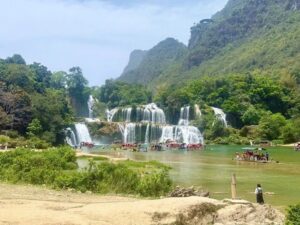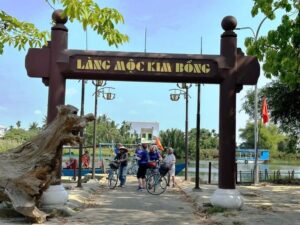With its white beaches, tranquil village scenes, and lots of fresh air, Minh Chau Island in Quang Ninh Province offers a sublime northern summer getaway. After a 200km drive from Hanoi, we arrived at Cai Phong Pier and took a 40-minute speed-boat ride through the glistening opal bay.
Minh Chau – literally: Oriental Pearl – sits in these waters like its namesake stone, polished white by eons of waves.
We soon made our way down to Chuong Nep Beach. Golden sunlight shined up off the coastline wrapping us in a bright, warm silence.
At last, we were away.
Chuong Nep and Tram Forest take their names from a romantic legend. The story goes that a brave man named Chuong and a beautiful girl named Tram once shared time on this beach together.
Chuong was called to the front to battle foreign invaders and he was killed. His girlfriend Tram went to the seaside everyday to cry.
Moved by her love, the God of Sea brought Chuong’s corpse back to his home island and the local villagers buried him at the beach. Tram later died from grief and was buried next to Chuong’s tomb.
One day the God of Forest visited this site and learned the story of Chuong and Tram. Moved by their love, he sowed seeds on the sandy site. The seedlings grew fast and turned into a lush forest. Local people named the forest “Tram” and the beach “Chuong Nep.”
“Nep” refers to a delicious oyster that lives under the white sand which, residents say, Tram offered to her descendents as a reminder of what a good cook she had been.
Nowadays, the long stretch of primitive Tram forest has come to symbolize the beautiful island. This 14-hectare forest plays a vital role in the life of the islanders as well as many living creatures here. It has not only protected them from harsh storms but it feeds the entire island.
From Tram forest, we walked along a little trail to Nhang Ria Beach, where waves hit the smooth white sand. Apart from offering an excellent spot to swim and sunbathe, this beach is a wonderful camp site.
Snorkelers and coral reef enthusiasts should head down the road to Dau Cao Beach.
We decided to skip it. Our tour guide, Minh Son, took us to Cai Lang, the oldest fishing village on this island. “Don’t hesitate to say ‘yes, I’d love to’ when locals invite you to visit their homes and for some fried sá sùng (jellyfish),” our tour guide reminded us before we left him. The dish proved to be delectable. Minh Son explained that the tasty and nutritious jellyfish varietal is rather costly. Locals reserve it for visiting relatives, friends or special guests.
Son took us to see the clear waters of the Nang Tien (fairy) well. “Legend has it that if you wash your hair with water from this well, it will grow very quickly and smoothly,” he said. This peaceful fishing village is a wonderful place to see wild flowers.
Minh Chau Island is also home to a nature reserve where sea turtles come and spawn. The reserve is located at Con Trui Beach, some 500m from the island’s port. If visitors visit Minh Chau sometime between May and July, they might have a chance to see the sea turtles coming to spawn, especially during strong tides and storms.
While many of Vietnam’s beaches have been commercialized, Minh Chau remains wild and unspoiled. So come and discover the island before it’s too late.














